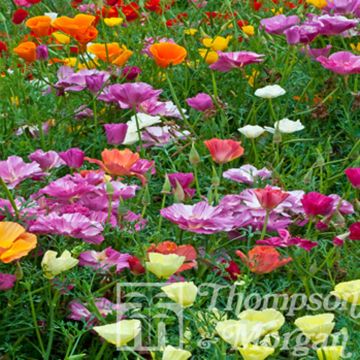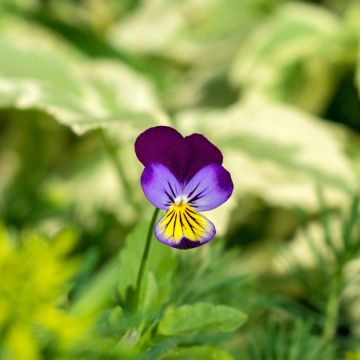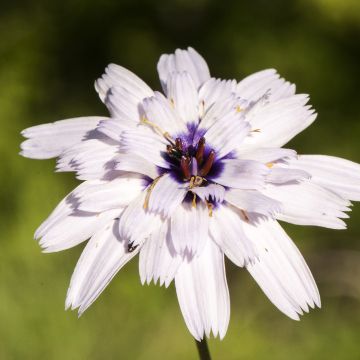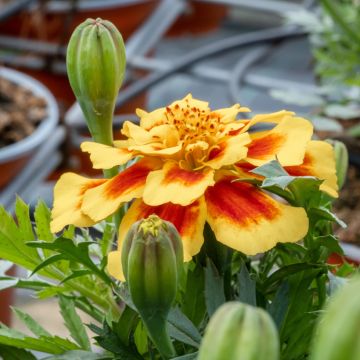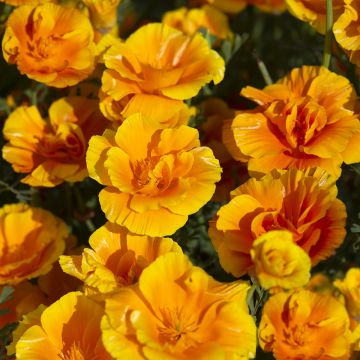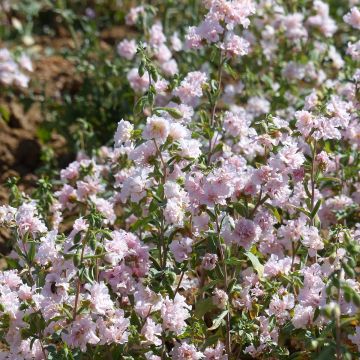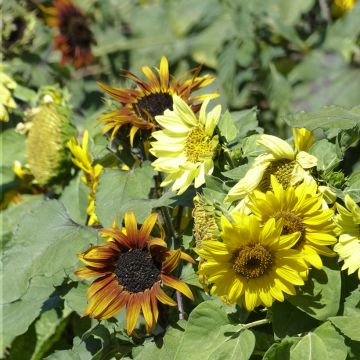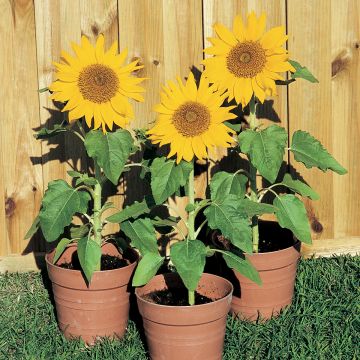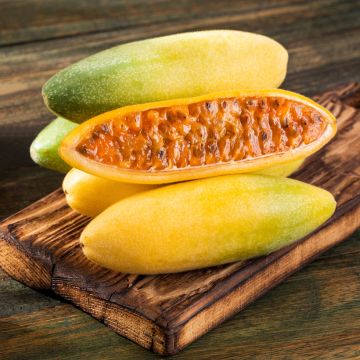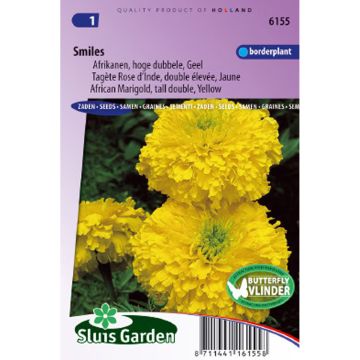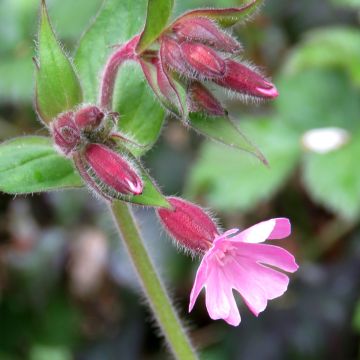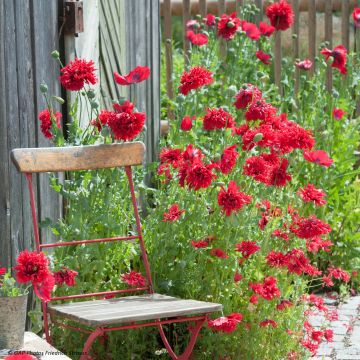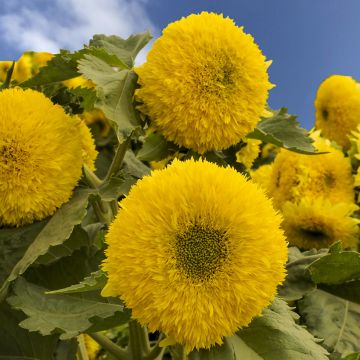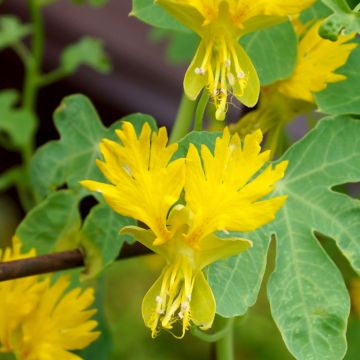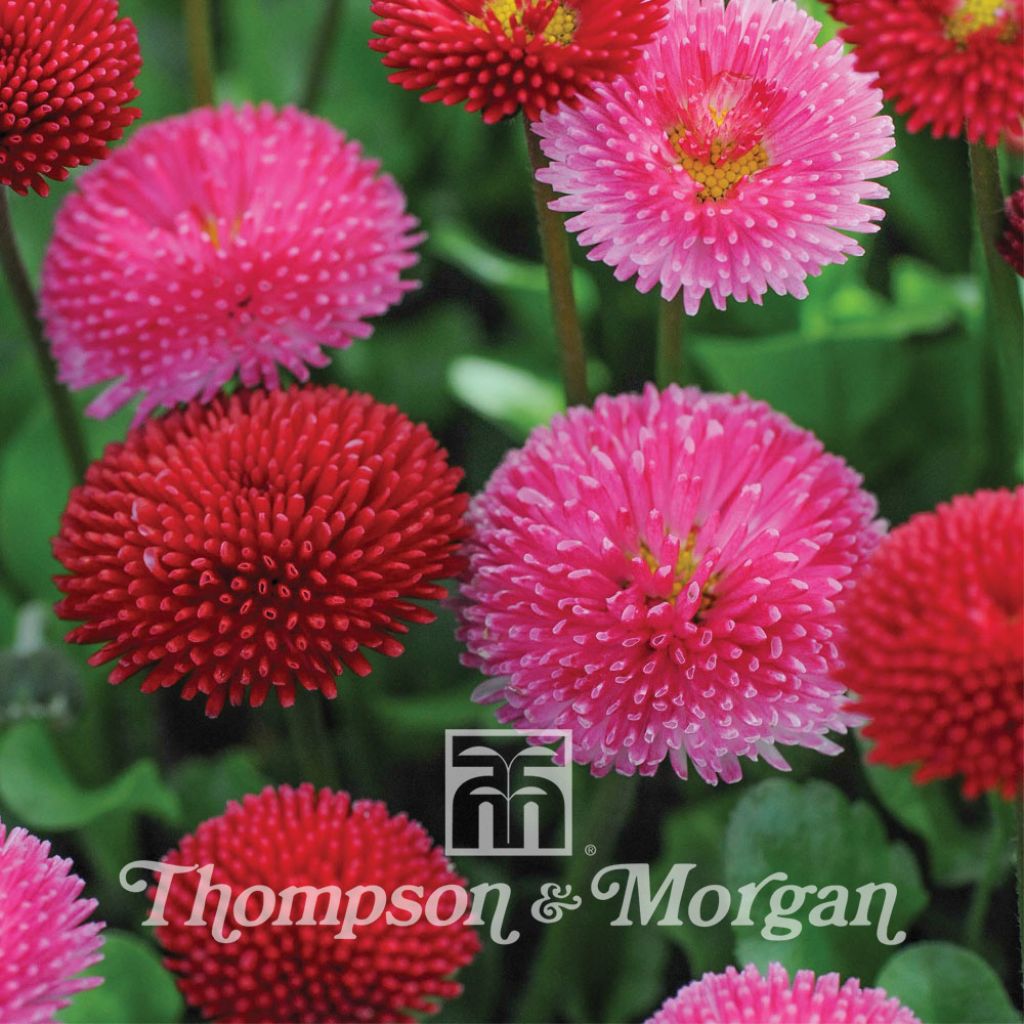

Bellis perennis Pomponette Mixed - English Daisy Seeds
Bellis perennis Pomponette Mixed - English Daisy Seeds
Bellis perennis Pomponette Mixed
Common Daisy, Lawn Daisy, English Daisy
This item cannot be shipped to the selected country
Dispatch by letter from €3.90
More information
Schedule delivery date,
and select date in basket
This plant carries a 6 months recovery warranty
More information
We guarantee the quality of our plants for a full growing cycle, and will replace at our expense any plant that fails to recover under normal climatic and planting conditions.
Seed-only orders are dispatched by sealed envelope. The delivery charge for seed-only orders is €3.90.
Does this plant fit my garden?
Set up your Plantfit profile →
Description
This mix of English daisies 'Pomponnette Mixed', also called Bellis perennis, is one of spring’s pleasures. Indeed, its early little pompoms with yellow hearts come in the tasty, pastel colours of certain candies: pinks and reds that once combined with bulbs, brighten up flower beds as well as window boxes. Its hardiness allows everyone to enjoy its floriferousness.
Bellis perennis means "eternal beauty" and symbolises the Virgin Mary. In the language of flowers, they represent innocence and attachment. It is true that their childish and cute button-like appearance herald the long-awaited spring. It is originally a perennial that is used as a biennial, that prefers moist but well-drained soils. Its size (15 cm) allows it to be inserted into the edge of flowerbeds, in front of daffodils and tulips, but you can also find a place for it in pots and planters, among Grape hyacinths and forget-me-nots. Its pompom flowers are simple but tightly quilled: they form almost complete spheres (2 cm in diameter) made up of many narrow, densely packed petals that open up only to reveal a small yellow centre. Their colours are both soft and vibrant, ranging from pink to dark red. You can even taste them since daisy petals are edible; so sprinkle your salads with these small colourful filaments.
Several small, hairy stems arising from a rosette of dark green leaves, each bear a single flower. This flower is denser and more sophisticated than our common lawn daisies, but is still light and simple. They are charming planted in large groups but also combined with other plants with smaller flowers or bushier foliage. Do not hesitate to remove faded flowers to encourage further blooming. You will enjoy their cheerful features from March to May, which is why they are also called 'Easter flowers’ by the French. However, they also attract slugs and snails: a thing ring of ashes will protect them from these gluttons.
The mix 'Pomponette Mixed' is to be sown in the summer and transplanted in autumn. Your English daisies will grow just in time to welcome spring with gentle enthusiasm.
Report an error about the product description
Flowering
Foliage
Plant habit
Botanical data
Bellis
perennis
Pomponette Mixed
Asteraceae
Common Daisy, Lawn Daisy, English Daisy
Cultivar or hybrid
Other Thompson and Morgan seeds
Planting and care
The mix of English Daisies 'Pomponnette Mixed' is sown in summer, just like biennials. The seeds prefer temperatures between 15 and 20 °C so you can sow them outdoors or indoors, if well ventilated. They will emerge between 7 and 21 days depending on conditions.
Scatter seeds in small pots or in a tray filled with soil mixed with a some sand or vermiculite. Cover with a fine layer of soil and keep moist. In October, the plants are pricked out and placed in a flowerbed or window box. In both cases, you can plant your spring bulbs at the same time, placing them between the plants. Keep an eye out for snails and slugs which are fond of the small shoots of these daisies.
Sowing period
Intended location
This item has not been reviewed yet - be the first to leave a review about it.
Flower seeds
Haven't found what you were looking for?
Hardiness is the lowest winter temperature a plant can endure without suffering serious damage or even dying. However, hardiness is affected by location (a sheltered area, such as a patio), protection (winter cover) and soil type (hardiness is improved by well-drained soil).

Photo Sharing Terms & Conditions
In order to encourage gardeners to interact and share their experiences, Promesse de fleurs offers various media enabling content to be uploaded onto its Site - in particular via the ‘Photo sharing’ module.
The User agrees to refrain from:
- Posting any content that is illegal, prejudicial, insulting, racist, inciteful to hatred, revisionist, contrary to public decency, that infringes on privacy or on the privacy rights of third parties, in particular the publicity rights of persons and goods, intellectual property rights, or the right to privacy.
- Submitting content on behalf of a third party;
- Impersonate the identity of a third party and/or publish any personal information about a third party;
In general, the User undertakes to refrain from any unethical behaviour.
All Content (in particular text, comments, files, images, photos, videos, creative works, etc.), which may be subject to property or intellectual property rights, image or other private rights, shall remain the property of the User, subject to the limited rights granted by the terms of the licence granted by Promesse de fleurs as stated below. Users are at liberty to publish or not to publish such Content on the Site, notably via the ‘Photo Sharing’ facility, and accept that this Content shall be made public and freely accessible, notably on the Internet.
Users further acknowledge, undertake to have ,and guarantee that they hold all necessary rights and permissions to publish such material on the Site, in particular with regard to the legislation in force pertaining to any privacy, property, intellectual property, image, or contractual rights, or rights of any other nature. By publishing such Content on the Site, Users acknowledge accepting full liability as publishers of the Content within the meaning of the law, and grant Promesse de fleurs, free of charge, an inclusive, worldwide licence for the said Content for the entire duration of its publication, including all reproduction, representation, up/downloading, displaying, performing, transmission, and storage rights.
Users also grant permission for their name to be linked to the Content and accept that this link may not always be made available.
By engaging in posting material, Users consent to their Content becoming automatically accessible on the Internet, in particular on other sites and/or blogs and/or web pages of the Promesse de fleurs site, including in particular social pages and the Promesse de fleurs catalogue.
Users may secure the removal of entrusted content free of charge by issuing a simple request via our contact form.
The flowering period indicated on our website applies to countries and regions located in USDA zone 8 (France, the United Kingdom, Ireland, the Netherlands, etc.)
It will vary according to where you live:
- In zones 9 to 10 (Italy, Spain, Greece, etc.), flowering will occur about 2 to 4 weeks earlier.
- In zones 6 to 7 (Germany, Poland, Slovenia, and lower mountainous regions), flowering will be delayed by 2 to 3 weeks.
- In zone 5 (Central Europe, Scandinavia), blooming will be delayed by 3 to 5 weeks.
In temperate climates, pruning of spring-flowering shrubs (forsythia, spireas, etc.) should be done just after flowering.
Pruning of summer-flowering shrubs (Indian Lilac, Perovskia, etc.) can be done in winter or spring.
In cold regions as well as with frost-sensitive plants, avoid pruning too early when severe frosts may still occur.
The planting period indicated on our website applies to countries and regions located in USDA zone 8 (France, United Kingdom, Ireland, Netherlands).
It will vary according to where you live:
- In Mediterranean zones (Marseille, Madrid, Milan, etc.), autumn and winter are the best planting periods.
- In continental zones (Strasbourg, Munich, Vienna, etc.), delay planting by 2 to 3 weeks in spring and bring it forward by 2 to 4 weeks in autumn.
- In mountainous regions (the Alps, Pyrenees, Carpathians, etc.), it is best to plant in late spring (May-June) or late summer (August-September).
The harvesting period indicated on our website applies to countries and regions in USDA zone 8 (France, England, Ireland, the Netherlands).
In colder areas (Scandinavia, Poland, Austria...) fruit and vegetable harvests are likely to be delayed by 3-4 weeks.
In warmer areas (Italy, Spain, Greece, etc.), harvesting will probably take place earlier, depending on weather conditions.
The sowing periods indicated on our website apply to countries and regions within USDA Zone 8 (France, UK, Ireland, Netherlands).
In colder areas (Scandinavia, Poland, Austria...), delay any outdoor sowing by 3-4 weeks, or sow under glass.
In warmer climes (Italy, Spain, Greece, etc.), bring outdoor sowing forward by a few weeks.

































